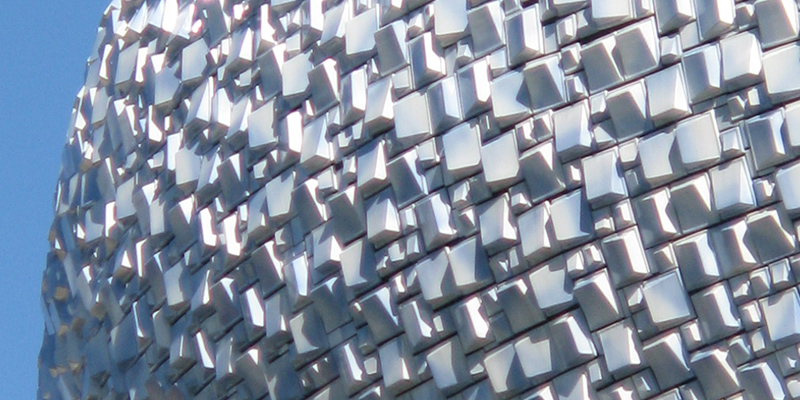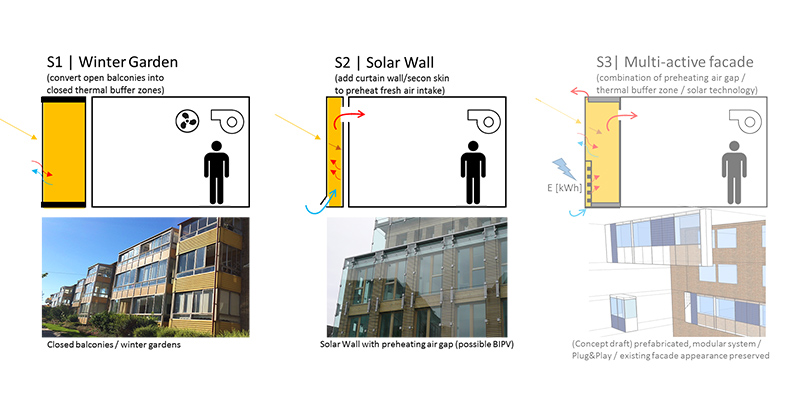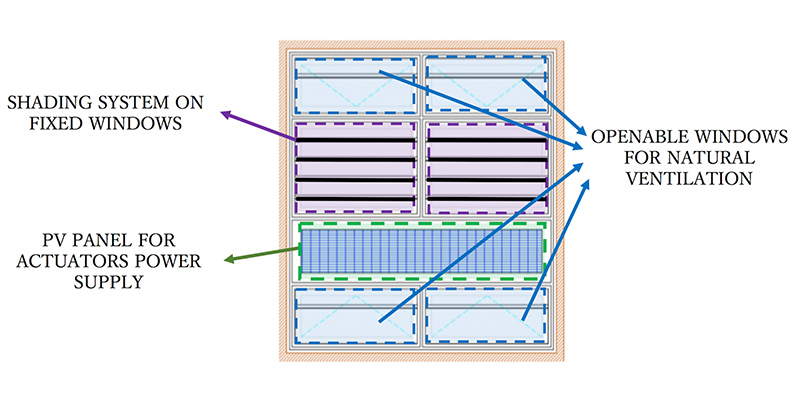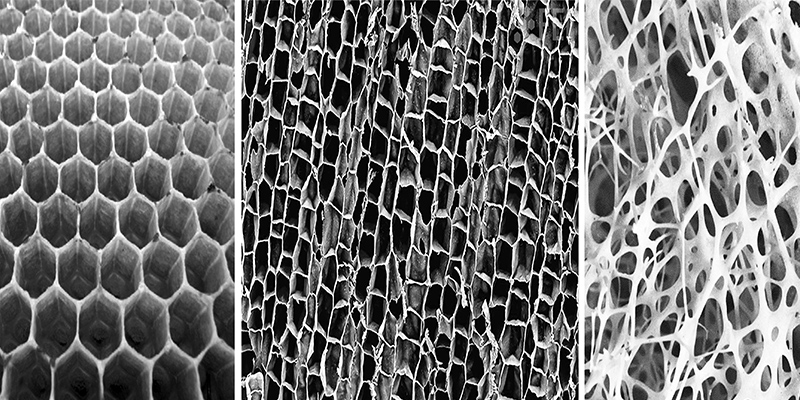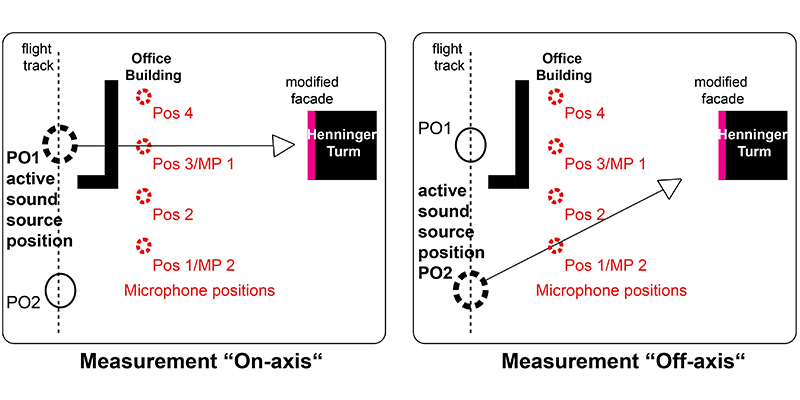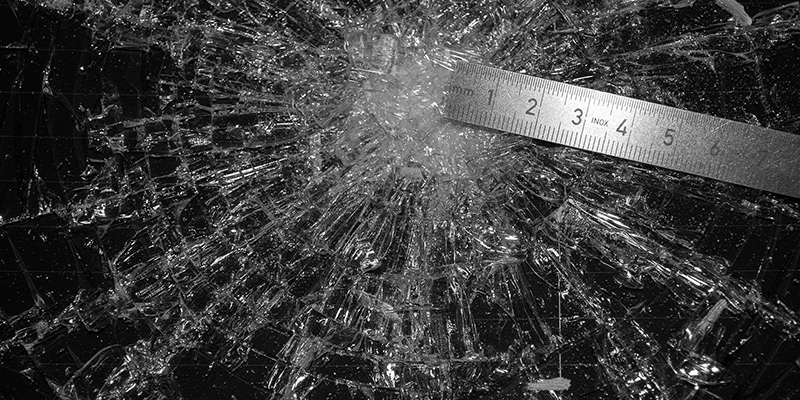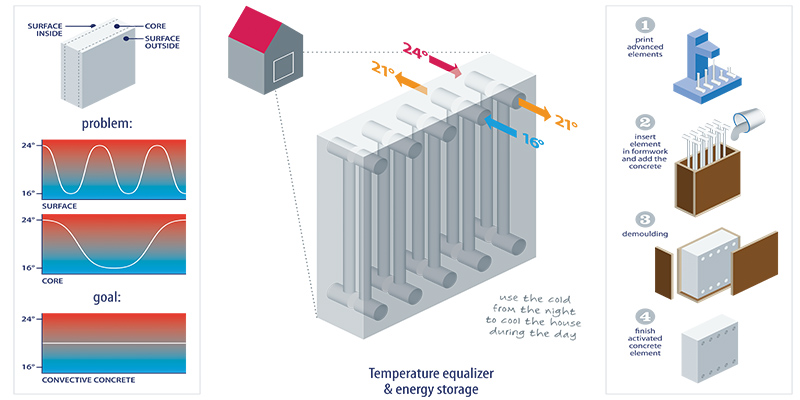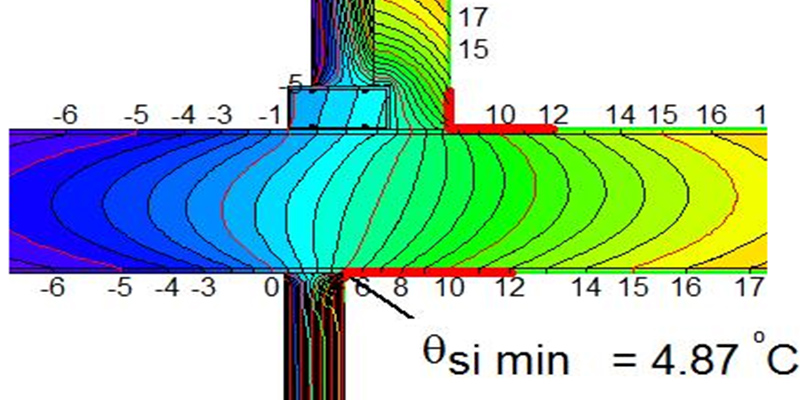Editorial
-
Dear JFDE Readers and Authors,
This issue is the result of the facade conference Powerskin, held on 19 January 2016 at the building tradefair ‘Bau’ in Munich. The conference was organised in a cooperation of TU Munich, TU Darmstadt and TU Delft. All three universities maintain a facade research and education unit on building envelopes. The conference featured a mix of practice and education related and scientific contributions. Again, JFDE was chosen as the platform to publish a selection of scientific papers. A total of 22 abstracts were reviewed of which 17...
Articles
-
In order to meet the Swedish energy efficiency objectives for the built environment until 2050, a particular building stock has to be addressed: the houses of the Million Homes Programme, an ambitious housing programme of the 1960s and 70s that resulted in a large number of standardized multi-family houses all over Sweden. These are in need of upgrading the energy and comfort quality to current standards, which provides an excellent opportunity to investigate the potentials of ‘prefabricated multi-active’ façades for refurbishments on large scale. While ‘prefabrication’...
-
A modular multifunctional façade for the retrofit of shopping malls, capable of adapting to different climates and to the existing building features both by the presence of movable components and by proper sizing of the fixed ones, is under development within the European FP7 project CommONEnergy. In particular, this curtain-wall façade is equipped with a fixed shading system, a photovoltaic panel with a battery feeding the automated openings for natural ventilation. The aim of this work is to define a reliable parametric model for a multi-functional façade system, to support designers...
-
The last decades have been marked by a growing concern over scarcity of resources caused by the rapid industrialization of emerging economies as well as by the high material consumption at a global scale. These changing environmental conditions have inevitably created new challenges and demands for mediation of the interaction between the natural and the human-made environments. In response to these challenges, designers are currently moving away from conventional top-down design, towards a nature-inspired approach in search of the underlying principles of morphogenesis and...
-
Solar energy has been actively promoted as a clean energy source since 1973’s oil crisis, evidenced by the emergence of initiatives such as the Solar Heating & Cooling Programme of the International Energy Agency or the US Department of Energy. Nonetheless, solar technologies have not been widely used in the built environment, limiting their operation to industrial and macroscale applications. Commercially available products such as building integrated PV panels (BIPV) or building integrated solar thermal collectors (BIST); and novel prototypes and concepts for solar...
-
The increasing migration into cities leads to an increasing number of people stressed by noise. More and more people are moving into urban settings comprised of multiple noise sources and hard reflective glass and steel facades. The omnidirectional arrangement of noise sources like airborne noise or car traffic noise and their reflection on the facades neither composes urban arrangements with silent indoor areas nor comfortable quiet areas outdoor. To come up with requirements for silent areas inside and outside of buildings further design parameters have to be introduced. The facade is...
-
“Architecture Fully Fashioned” is about lightweight design and new textile based building skins. Fully fashioned refers to a textile production technology wherein all parts of a piece of cloth are produced in one integrated production process, ready to wear the moment they leave the machine. Fully fashioned powerskin in an architectural sense implies a light, highly prefabricated textile envelope with minimum needs of installation work on the building site.
To develop these new textile powerskins, experimental student works...
-
The majority of the photovoltaic (PV) modules used in building skins contains glass, but does not entirely comply with the product standards and design rules for glass in building. As a result, structural applications are subject to individual approval by the building authorities in many cases. This paper presents experimental research on glass based photovoltaic modules, analysing their mechanical properties in comparison with approved construction products. The focus is on glass-glass modules and on the question whether the most common module configurations can be classified as...
-
This paper reports on the research-driven design process of an innovative thermal mass concept: Convective Concrete. The goal is to improve building energy efficiency and comfort levels by addressing some of the shortcomings of conventional building slabs with high thermal storage capacity. Such heavyweight constructions tend to have a slow response time and do not make effective use of the available thermal mass. Convective Concrete explores new ways of making more intelligent use of thermal mass in buildings. To accomplish this on-demand charging of thermal mass, a network of ducts and...
Applied practice
-
The paper illustrates the use of aerogel technology in façades to reduce thermal bridging and limit condensation. Additionally by mitigating local thermal bridges the indoor climate, especially draught and molds creation, can be eliminated as the surface temperature increases and prevents these negative factors. Curtain walls, in comparison to opaque wall, are often not designed in an energy efficient way and can be large contributors to heat loss of buildings. This is common for curtain walls in Asia and North America, where the energy requirements are not as demanding as in Europe....

